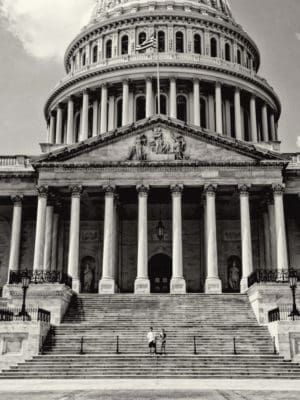Especially those of us in the transportation and walkability world

By Emilie Bahr
I love my street – a tree-lined, kid-filled corridor in the heart of a lovely, walkable neighborhood that fills with crowds for the city’s biggest music festival each year.
Even in a Walkable Neighborhood, There is Still a Dividing Highway
If I had to list the drawbacks to living here, one would be the intersection at the end of our block where a state highway is the dividing line between my house and a newly-vibrant commercial corridor just on the other side. Despite its complicated geometry, faded crosswalks, and fast-moving traffic that make it utterly inhospitable to pedestrians, I cross it on foot at least a couple of times each week, usually with my young kids in tow, the risks a testament to the allure of the breakfast tacos and vegan donuts to be found on the other side.
Every time we make the trip, I hold my kids’ hands tightly, ready to yank them out of harm’s way at a moment’s notice, glowering at the drivers as they approach, and many of them glowering (and sometimes honking and cursing) at me. When we make it safely to the other side, my breathing and heart rate noticeably relax – until the trip home.
I’ve thought about spearheading much-needed changes to this intersection countless times before. As an urban planner who manages a program focused on building the ranks of walkability advocacy, it’s the sort of thing I’m made for. But it is but one item on a long list of challenges I’m interested in doing something about; it involves multiple government agencies, which means a lot of bureaucratic headaches; and lately, I have to admit, I’ve felt my motivation for this type of work slipping.
I live in New Orleans, a place long said to stand on the front lines of climate change, though as cities across the globe in recent years have suffered through floods, scorching heat, drought, and other record-breaking weather events, it seems we have plenty of company. And as I have watched with increasing dismay as opportunity after opportunity for federal action to confront the most pressing challenge confronting humanity has fallen by the wayside, I have become a case study in climate despair.
Finding Hope in the Newly Passed Inflation Reduction Act

But over the past couple of weeks, something significant has shifted in me, and an unfamiliar, hope-adjacent feeling has started to bubble up again. The impetus? The uninspiring-sounding Inflation Reduction Act was recently approved by Congress and signed into law by President Biden.
I’m well aware of the criticism leveled against the bill, and that members of the active transportation community have in particular lamented the car-centric paradigm reinforced by the legislation. (I look forward to taking advantage of the tax break on an electric car, but would have been one of the first to tap into an incentive for electric bikes purportedly slashed from the final version of the bill.)
Despite its flaws, however, this legislation marks the largest investment in climate action ever undertaken by the U.S. government, a huge departure from the status quo, and a downpayment on our collective future that is already generating new momentum around aggressive pro-environment policy and action.
Sure, the Inflation Reduction Act is imperfect. But I’m finding motivation in this fact. That’s because it was public pressure that made the IRA happen in the first place when it seemed hope was lost for getting a bill through this Congress at all – and because a lot of the work that remains to be done to address climate change falls within our wheelhouse. It’s estimated that this bill will get the U.S. to around a 40 percent reduction in 2005-level carbon emissions by 2030, or about 10 percent shy of Biden’s goal.
We Are All Climate Activists and Should Start Thinking That Way
No less a body than the U.N.’s Intergovernmental Panel on Climate Change stressed this year that improving walkability could dramatically shrink communities’ carbon footprints. It’s time all of us in the transportation-advocacy world start thinking of ourselves as climate activists as we work to influence decisions governing everything from the shape of our roads to zoning codes, and transportation and housing policies and priorities – decisions often governed by municipal and state-level action. These are areas the IRA doesn’t touch but that we can all do something about.
One morning last week, I found myself standing in the middle of the intersection at the end of my block with a couple of neighbors and representatives from the city’s and state’s streets departments – the government officials sporting neon field vests appropriate for the hazardous conditions. We’ve got our work cut out for us, but I’m ready to take it on.